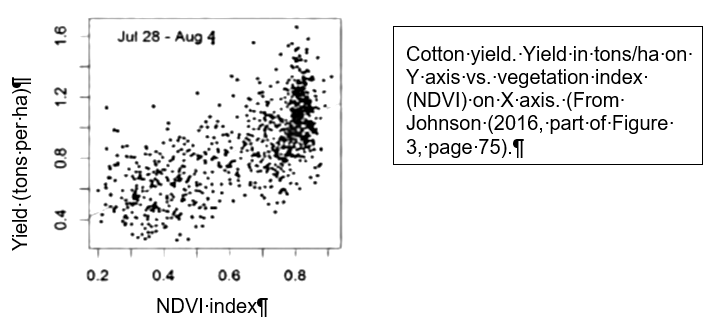Ecology as a science is deeply divided by two views of the natural world. First is the view that we need to monitor changes in the distribution and abundance of the biota and try to explain why these changes are occurring through experiments. The second view is that we need to understand ecosystems as complex systems, and this can be done only by models with a tenuous link to data. It is worth discussing the strengths and weaknesses of each of these views of our science.
The first view could be described as the here-and-now approach, studies of how the populations, communities, and ecosystems are changing in all the biomes on Earth. It is clearly impossible to do this properly because of a lack of funding and person-power. Because of this impossibility we change our focus to short-term studies of populations, species, or communities and try to grasp what is happening in the time scale of our lifetime. This had led to a literature of confusing short-term studies of problems that are long-term. Experiments must be short term because of funding. Any long-term studies such of those highlighted in textbooks are woefully inadequate to support the conclusions reached. Why is this? It is the baffling complexity of even the simplest ecological community. The number of species involved is too large to study all of them, so we concentrate on the more abundant species, assuming all the rare species are of little consequence. This has led to a further division within the monitoring community between conservation ecologists who worry about the extinction of larger, dominant species and those that worry about the loss of rare species.
The first approach is further compromised by climate change and human exploitation of the Earth. You could invest in the study of a grassland ecosystem for 15 years only to find it turned into a subdivision of houses in year 16. We try to draw conclusions in this hypothetical case by the data of the 15 years of study. But if physiological ecologists and climate change models are even approximately correct, the structure of similar grassland ecosystems will change due to rainfall and temperature shifts associated with greenhouse gases. Our only recourse is to hope that evolution of physiological tolerances will change fast enough to rescue our species of interest. But there is no way to know this without further empirical studies that monitor climate and the details of physiological ecology. And we talk now about understanding only single species and are back to the complexity problem of species interactions in communities.
The second approach is to leap over all this complexity as stamp-collecting and concentrate on the larger issues. Are our ecological communities resilient to climate change and species invasions? Part of this approach comes from paleoecology and questions of what has happened during the last 10,000 or one million years. But the details that emerge from paleoecology are very large scale, very interesting but perhaps not a good guide to our future under climate change. If a forward-looking forestry company wishes to make sure it has 100-year-old trees to harvest in 100 years’ time, what species should they plant now in central Canada? Or if a desert community in Chile is to be protected in a national park, what should the management plan involve? These kinds of questions are much harder to answer than simpler ones like how many dingoes will we have in central Australia next year.
Long-term experiments could bridge the gap between these two approaches to ecological understanding, but this would mean proper funding and person-power support for numerous experiments that would have a lifetime of 25 to 100 years or more. This will never happen until we recognize that the Earth is more important than our GDP, and that economics is the king of the sciences.
Where does all this lead ecological scientists? Both approaches have been important to pursue in what has been the first 100 years of ecological studies and they will continue to be important as our ecological understanding improves. We need good experimental science on a small scale and good broad thinking on long time scales with extensive studies of everything from coral reefs to the Alaskan tundra. We need to make use of the insights of behavioural ecology and physiological ecology in reaching our tentative conclusions. And if anyone tells you what will happen in your lifetime in all our forests and all the biodiversity on Earth, you should be very careful to ask for strong evidence before you commit to a future scenario.
Beller, E.E., McClenachan, L., Zavaleta, E.S., and Larsen, L.G. (2020). Past forward: Recommendations from historical ecology for ecosystem management. Global Ecology and Conservation 21, e00836. doi: 10.1016/j.gecco.2019.e00836.
Bro-Jørgensen, J., Franks, D.W., and Meise, K. (2019). Linking behaviour to dynamics of populations and communities: application of novel approaches in behavioural ecology to conservation. Philosophical Transactions of the Royal Society, B. Biological Sciences 374: 20190008. doi: 10.1098/rstb.2019.0008.
Lidicker, W.Z. (2020). A Scientist’s Warning to humanity on human population growth. Global Ecology and Conservation 24, e01232. doi: 10.1016/j.gecco.2020.e01232.
McGowan, D. W., Goldstein, E. D., and Zador, S. (2020). Spatial and temporal dynamics of Pacific capelin Mallotus catervarius in the Gulf of Alaska: implications for ecosystem-based fisheries management. Marine Ecology. Progress Series 637, 117-140. doi: 10.3354/meps13211.
Tsujimoto, M., Kajikawa, Y., and Matsumoto, Y. (2018). A review of the ecosystem concept — Towards coherent ecosystem design. Technological Forecasting & Social Change 136, 49-58. doi: 10.1016/j.techfore.2017.06.032.
Wolfe, Kennedy, Kenyon, Tania M., and Mumby, Peter J. (2021). The biology and ecology of coral rubble and implications for the future of coral reefs. Coral Reefs 40, 1769-1806. doi: 10.1007/s00338-021-02185-9.
Yu, Zicheng, Loisel, J., Brosseau, D.P., Beilman, D.W., and Hunt, S.J. (2010). Global peatland dynamics since the Last Glacial Maximum. Geophysical Research Letters 37, L13402. doi: 10.1029/2010GL043584.
